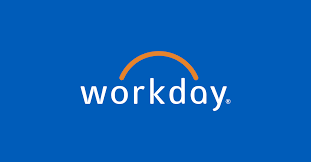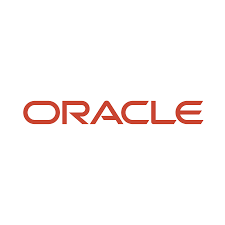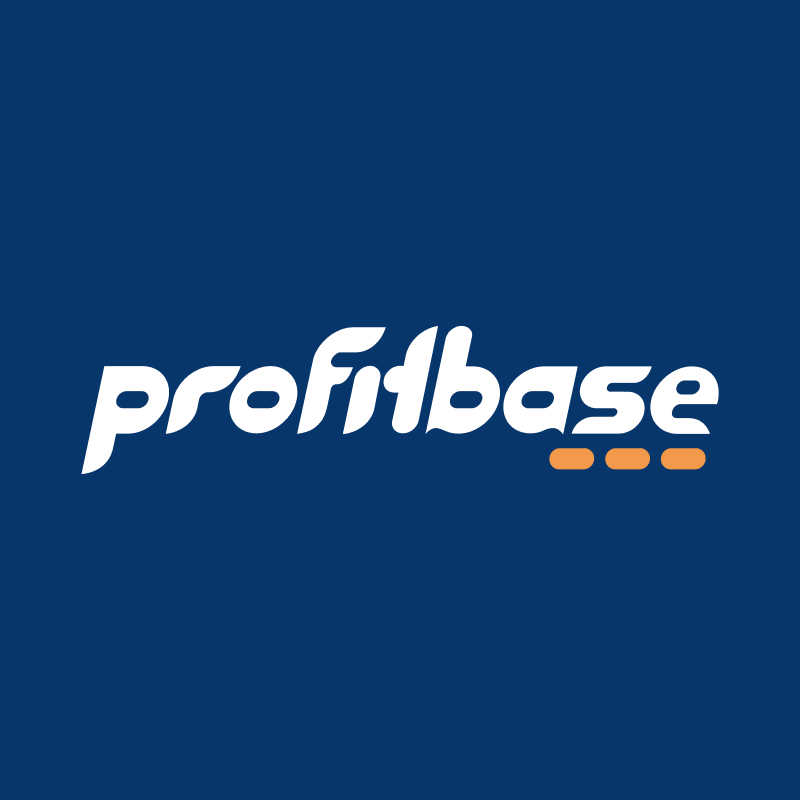What Are The Recent Trends In Enterprise Performance Management (EPM) Software?
Software for enterprise performance management, or EPM, has changed dramatically in recent years to keep up with the shifting corporate environment and advances in technology. To make an informed choice, it is essential for buyers to keep up with the latest developments in EPM software. Some of the most notable developments in the EPM software market will be covered in this response.
1. Growing Utilization of Machine Learning And AI: The combination of machine learning (ML) and artificial intelligence (AI) capabilities is one of the most important developments in EPM software. EPM software can swiftly evaluate vast amounts of data thanks to these technologies, which also offer insightful information for strategic decision-making. AI and ML are changing how companies monitor their performance, from forecasting to predictive analytics.
2. Adopting Cloud-Based Technologies: In recent years, cloud-based EPM systems have become increasingly popular, and this trend is predicted to continue in the years to come. Because of their cost-effectiveness, scalability, and adaptability, these solutions appeal to companies of all kinds. Organizations may make well-informed decisions while on the go by utilizing the cloud's power to access performance data at any time and from any location.
3. Pay Attention To Privacy And Data Security: Businesses now have serious worries about data security and privacy due to the growing volume of data being gathered and examined by EPM software. In order to offer a safe and reliable platform for managing performance data, EPM software providers are consequently integrating strong security features and compliance controls into their products.
4. System Integration: EPM software is now a crucial component of the entire business ecosystem rather than merely a stand-alone solution. Consequently, integrating EPM software with other enterprise systems like ERP, CRM, and HRM has become more and more popular. A comprehensive picture of the organization's performance is made possible by these integrations, which enable the smooth transfer of data between systems.
5. Customization And Interfaces: That Are Easy to Use The adoption of EPM software now heavily depends on the user experience. These days, vendors are concentrating on developing intuitive user interfaces and providing customized dashboards according to each person's position and requirements. This enhances users' overall experience and productivity by providing them with rapid access to pertinent and useful insights.
Benefits Of Using Enterprise Performance Management (EPM) Software
Software for enterprise performance management (EPM) is a potent instrument that aids businesses in performance management and decision-making. It integrates a number of procedures and methods to enhance the organization's overall performance. To keep ahead of the competition in today's cutthroat business environment, companies must invest in EPM software. The following are some of the main advantages of utilizing EPM software:
1. Simplifies Performance Management Process: By centralizing and automating performance management procedures, EPM software helps businesses monitor their performance in real time. This ensures accurate and trustworthy data for decision-making by doing away with the necessity for human data entry and lowering the possibility of errors.
2. Promotes CollaborationAnd Transparency: One of the main advantages of EPM software is that it makes it possible for departments and teams to collaborate and communicate more effectively. Everyone can collaborate, access the same data, and align their aims to accomplish the organization's overall objectives while using a centralized system.
3. Offers Real-Time Insights: EPM software gives decision-makers access to real-time information about how well the company is performing, enabling them to spot problems early and make the required corrections. This facilitates proactive decision-making and keeps the company consistently on course to achieve its objectives.
4. Facilitates Data-Informed Decision Making: EPM software gives businesses the ability to make data-driven decisions through sophisticated reporting and analytics features. Organizations can make strategic and well-informed decisions by examining historical and present performance data to find trends, patterns, and possible hazards.
5. Boosts Productivity And Efficiency: EPM software boosts productivity and efficiency by automating manual operations and offering real-time information. Employees may now devote more of their time to more crucial work, which improves resource usage and, eventually, performance.
6. Assures Regulatory Compliance: Integrated compliance capabilities in EPM software guarantee that businesses follow rules and regulations. This saves the company time and money by lowering the chance of non-compliance and associated fines.
7. Saves Time And Money: Businesses can save a lot of time and money by implementing EPM software. Organizations can save money on labor and better utilize their resources by implementing automated procedures that decrease errors and increase efficiency.
Important Factors To Consider While Purchasing Enterprise Performance Management (EPM) Software?
There are a number of crucial aspects to take into account while choosing the best Enterprise Performance Management (EPM) software. To make sure you select the software that best suits your business, it is crucial to carefully consider the needs of your enterprise and investigate the various possibilities. The following are important things to think about while buying EPM software:
1. Functionality: Identify the precise features and functions your business needs before selecting a choice. Budgeting, forecasting, reporting, financial consolidation, and analytics are all common features of EPM software. Take into account the present and future requirements of your organization to make sure the software you select can help you achieve your goals.
2. Usability: EPM software shouldn't be difficult to understand and operate. Your employees should be able to easily embrace it without requiring a lot of training thanks to its user-friendly layout. To evaluate the software's usability and see if it meets your company's needs, you can ask for a sample or trial version.
3. Scalability: Your EPM software must to be able to grow with your company. It should be able to manage more users, more data, and more complicated activities with ease. This guarantees that, over time, your investment will continue to satisfy your demands.
4. Compatibility: Verify that the EPM program works with the databases and systems you currently have. Your data warehouses, ERP systems, and other pertinent apps should all work together flawlessly. By doing this, data silos may be avoided and information accuracy can be guaranteed.
5. Customization: Your business might require certain features, even though the software's basic features might satisfy your needs. Make sure the EPM program may be altered to meet your particular company requirements.
6. Assistance And Training: Getting enough assistance and training is essential if you want to get the most out of your EPM software. To get the most out of the software, look for a vendor that provides thorough onboarding, training, and continuing support.
7. Security: Since the EPM software stores and processes sensitive financial data, security cannot be compromised. To safeguard the financial data of your company, make sure the software has strong security features including role-based access control, data encryption, and frequent upgrades.
8. Cost: Since EPM software usually has a high price tag, it's critical to consider the entire cost of ownership, which includes licensing, implementation fees, and continuing maintenance expenses. To save money, don't sacrifice essential features; instead, make sure you're getting the most out of your investment.
What Are The Key Features To Look For In Enterprise Performance Management (EPM) Software?
For modern firms to efficiently plan, track, and evaluate their performance across all departments, enterprise performance management (EPM) software is an essential tool. It assists organizations in making wise decisions, effectively achieving their goals, and coordinating their aims with their overarching strategy. Selecting the best EPM software can be difficult given the abundance of options on the market. Here are the essential characteristics to search for in an EPM program to assist you in this process:
1. Comprehensive Dashboards And Reporting: The capacity of EPM software to deliver real-time insights via interactive dashboards and customisable reports is a crucial component. To assist users in monitoring their performance indicators and pinpointing areas for development, these dashboards ought to be able to compile data from many sources and display it in a logical way.
2. Budgeting And Forecasting: To help organizations develop precise and practical financial plans, the EPM software should offer strong budgeting and forecasting features. In order to assist organizations in making data-driven decisions based on a variety of hypothetical possibilities, it should enable scenario modeling and "what-if" analysis.
3. Integrated Financial Planning: An essential component of EPM software is integrated financial planning. It entails combining financial information from multiple sources, including sales, accounting, and human resources, to produce a comprehensive picture of the company's financial health. This function offers a thorough grasp of the company's financial health and facilitates improved decision-making.
4. Data Integration: An effective EPM program should be able to combine data from multiple sources, including spreadsheets, ERP systems, and CRM systems. By removing the need for human data entry and minimizing errors, this feature guarantees the consistency and accuracy of the data.
5. Collaboration And Workflow Automation: EPM software's collaboration and workflow automation tools make planning and budgeting easier. These capabilities save time and increase productivity by enabling several users to work on the same plan at once, track changes, and automate approval workflows.
6. Scalability: Your EPM software should be able to adapt to the evolving requirements and complexity of your company as it expands. Choose software that will grow with your company and provide more features and functionalities as required.
7. User-Friendly Interface: The EPM software should have an intuitive and user-friendly user interface. It should be simple to use and require little training for users to comprehend and make good use of its capabilities.
8. Cloud-based vs On-Premise: There are two types of EPM software: on-premise and cloud-based. While on-premise solutions give greater control and protection, cloud-based software offers cost-effectiveness, flexibility, and ease of access. Select the deployment option that best meets your needs after taking your organization's demands into account.
Why Do Businesses Need Enterprise Performance Management (EPM) Software?
Software for enterprise performance management (EPM) is a crucial tool for companies trying to improve overall performance and accomplish their strategic objectives. This robust program offers a complete solution for tracking and controlling important performance indicators across different divisions and roles inside a company. Having a strong EPM program is now essential in today's competitive and fast-paced company environment. The following are the main justifications for why companies require EPM software:
1. Simplify Financial Planning And Budgeting: By automating these procedures, EPM software lessens the need for spreadsheets and human data entry. In addition to saving time, this increases accuracy and lowers the possibility of mistakes. Businesses may estimate financial performance, make data-driven decisions to spur growth, and create comprehensive budgets with EPM software.
2. Align Strategies With Execution: Organizations can link their strategic plans to concrete tasks and projects by using EPM software. Better performance and overall success result from ensuring that the company's aims and objectives are in line with its day-to-day activities.
3. Measure And Examine Key Performance Indicators (KPIs): EPM software gives companies the ability to measure and examine KPIs in real time, giving them valuable information about how they are performing. Businesses can quickly pinpoint areas for improvement and make well-informed decisions to spur growth with the help of personalized dashboards and reports.
4. Improve Communication And Collaboration: EPM software encourages communication and collaboration between various teams and departments. This enhances cross-functional processes' efficiency and transparency, which boosts overall performance.
5. Identify And Reduce Risks: EPM software assists companies in proactively identifying and reducing risks. Businesses can detect possible dangers and take action before they become serious problems by using this comprehensive perspective of the organization's performance.
6. Boost Productivity And Efficiency: EPM software streamlines workflows and automates procedures, which saves time and effort on tasks like data collecting, reporting, and analysis. Employee time is freed up, enabling them to concentrate on high-value work, which boosts output and efficiency.
7. Maintain Regulation Compliance: By offering precise and auditable data, EPM software assists companies in maintaining regulatory compliance. For sectors like finance and healthcare that have stringent regulatory standards, this is especially important.
How Much Time Is Required To Implement Enterprise Performance Management (EPM) Software?
For every firm, putting Enterprise Performance Management (EPM) software into place is a big task. To ensure a successful implementation, it entails numerous stages and calls for meticulous preparation and execution. The size of the company, the intricacy of the business procedures, and the capabilities of the chosen software are some of the variables that can affect how long this process takes.
EPM software implementation might take anything from six months to two years on average. The initial planning and scoping stage, software selection, software configuration and customization, data migration, and training are all included in this timetable. It is important to remember that this estimate is flexible and could alter depending on your organization's unique requirements.
Establishing the needs and objectives of your company is the first stage in putting EPM software into use. This entails evaluating your present business procedures and determining what needs to be improved. Key stakeholders must be included in this process to guarantee their support and match the software with the goals of the company. Choosing the appropriate EPM software comes next after the requirements have been established.
Depending on how complicated your company's needs are and how many providers are being considered, this process could take two to four months. It is essential to carefully assess each software program's features and functionalities to make sure it satisfies your needs. Following software selection, the implementation team will start setting up and tailoring the program to your company's requirements.
Several months may pass during this phase, depending on how complicated your business procedures are. In order to guarantee that all historical data is accurately transferred from the old system to the new one, data migration is also an essential stage in the implementation process. Another crucial component of implementing EPM software is training. To guarantee that every end user knows how to use the software efficiently, a thorough training program must be in place.
Depending on the complexity of the product and the number of users, training sessions can last anywhere from a few days to several weeks. In conclusion, it can take anywhere from six months to two years to establish EPM software. To guarantee a successful implementation, it is crucial to include important stakeholders in the process, clearly describe requirements, and choose the appropriate software. Your company may fully profit from EPM software if you take a methodical approach and give each step enough time.
Which Industries Can Benefit The Most From Enterprise Performance Management (EPM) Software?
A useful tool for companies trying to enhance their financial planning, budgeting, forecasting, and general performance is enterprise performance management (EPM) software. It enables businesses to keep a careful eye on and evaluate their key performance indicators (KPIs) in order to make informed decisions and promote success. While EPM software can help companies in a variety of sectors, its application can have the biggest positive effects on some sectors. We will examine the leading industries that stand to gain the most from EPM software in this buyer's guide.
1. Finance And Banking: To make important financial decisions, the banking and finance sectors mainly rely on data and statistics. Financial institutions can improve risk management, cash flow management, and financial planning and budgeting procedures by implementing EPM software. These sectors may develop precise estimates, swiftly assess financial data in real-time, and make well-informed decisions to meet financial objectives with the help of EPM software.
2. Retail And E-commerce: Success in the fast-paced retail and e-commerce industries depends on remaining one step ahead of the competition. Businesses can make data-driven decisions to increase sales and profitability by using EPM software, which can offer real-time insights into customer, inventory, and sales data. In order to increase sales and improve inventory management, it can also help with demand forecasting and price strategy adjustments.
3. Manufacturing: Manufacturing organizations must closely monitor and analyze their manufacturing processes and deal with complicated data from several sources. Manufacturers can lower costs and increase operational efficiency by using EPM software, which provides a comprehensive picture of the supply chain. Manufacturers can use EPM software to make proactive decisions to satisfy consumer requests and improve inventory levels by analyzing data.
4. Healthcare: Due to the industry's rapid evolution, healthcare businesses must effectively monitor and manage their financial performance. EPM software makes it simple for healthcare providers to keep an eye on financial reporting, billing, and budgeting, empowering them to make wise decisions that will increase profitability. In order to improve patient care and make well-informed judgments about resource allocation, it can also help with patient data analysis.
5. Professional Services: To maintain profitability, professional service organizations such as marketing agencies, consulting firms, and legal firms heavily rely on time and project management. EPM software can track project budgets and expenses, optimize resource allocation, and expedite project management procedures, all of which can boost profitability and improve customer satisfaction.
Conclusion
In summary, companies aiming to enhance decision-making, accelerate corporate expansion, and simplify their financial procedures may find that Enterprise Performance Management (EPM) software is an effective instrument. EPM software may assist businesses of all sizes and sectors in achieving their financial management objectives thanks to its many features and capabilities that address various company requirements.
It's crucial to carefully consider and evaluate the unique requirements and goals of your company before deciding which EPM software to purchase. This will guarantee that the software you choose fits your company's objectives and has the features you need to satisfy your financial management needs. The breadth and depth of the software's capabilities, its usability and accessibility, and its compatibility with your current systems and procedures are some important aspects to take into account while assessing EPM software.
The vendor's reputation, customer service, and possibilities for continuing maintenance and upgrades should also be taken into consideration. Oracle EPM Cloud, SAP BPC, IBM Planning Analytics, and Adaptive Insights are a few of the best EPM programs available on the market, according to our research and evaluations. To meet the various needs of businesses, these solutions provide scalability and a variety of features.
Numerous advantages can result from investing in EPM software, including increased productivity, better decision-making, improved team communication, and increased visibility into financial data. Your company can obtain a competitive advantage and eventually spur development and profitability with the correct EPM software. To determine which solution best suits the unique requirements of your company, we advise carefully weighing your alternatives and speaking with your staff and vendors.






















